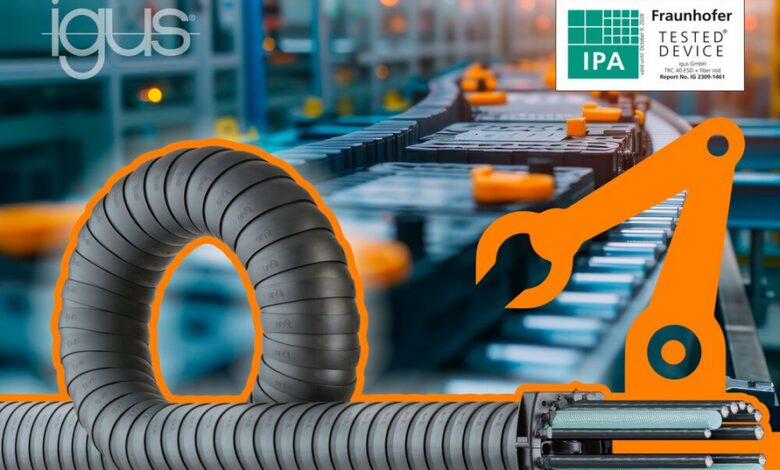Igus develops first robotic energy chain for dry cleanroom

Premiere
Igus develops first robotic energy chain for dry cleanroom
Source:
Igus | Translated by AI
Related Vendor
Batteries for electric mobility should be manufactured in dry clean rooms. Igus supports this.
(Picture: Igus)
In response to the growing demand for electric cars, which in turn increases the need for high-quality lithium-ion batteries, Igus reports. Therefore, ideally, batteries should be manufactured in so-called dry clean rooms with minimal humidity and maximum particle purity. At the same time, automation is required in this environment because people cannot stay in dry clean rooms for long. To ensure a safe and reliable energy supply for robots in this setting, Igus has developed the Triflex R TRC, the first robot energy supply system to meet the dry cleanroom certification of the Fraunhofer IPA for ISO class 4-5.
What a robot energy supply system that functions reliably at high speeds and increasingly smaller turning radii can look like is something Igus has been demonstrating for several years with the Triflex R. This is a three-dimensionally movable energy chain made of high-performance plastic for multi-axis robots. However, special areas of application, such as battery production, pose increasingly higher demands on the machine components used. With the Triflex R TRC and the associated spring rod module, Igus therefore offers the first robot energy supply system certified for dry cleanroom applications. It has been specifically developed for the power supply of industrial robots that are used in battery cell production. The additional ESD certification extends the possibilities for use.
Double safety with ESD material
The system essentially consists of two components, as Igus further explains. On the one hand, there is a three-dimensionally movable energy chain and a spring rod module. The chain is a closed variant of the Triflex R, which is made entirely of conductive ESD material – including connection elements with strain relief. This means that there is no risk of damage to the ESD-sensitive parts due to abrupt discharge. With the Triflex made of Igumid ESD, customers benefit twice over, as Igus emphasizes. This is because they save costs because the material is now part of the standard program. More security is provided by a material and product that has been tested for years. Igus also has other ESD chains as standard in its range. The integrated solid lubricants of the Igus high-performance plastics provide another benefit, as they do not need any lubricating grease, which would immediately harden in the dry clean room.
The module concept allows for easy assembly
In addition to the energy chain, the Triflex R TRC also consists of a spring rod module, as mentioned. It is similar to a fishing rod. Two integrated fiberglass rods are used to stabilize the energy chain up to the fifth axis and prevent contact between the robot and the energy chain. This allows for an almost contact-free production process, so that no particles are generated during the rotational movements. The prefabricated modules also allow for easy and quick assembly. Since there are no contact points, the energy supply system can also be used without problems with other separately certified products in the dry clean room, providing more flexibility.



